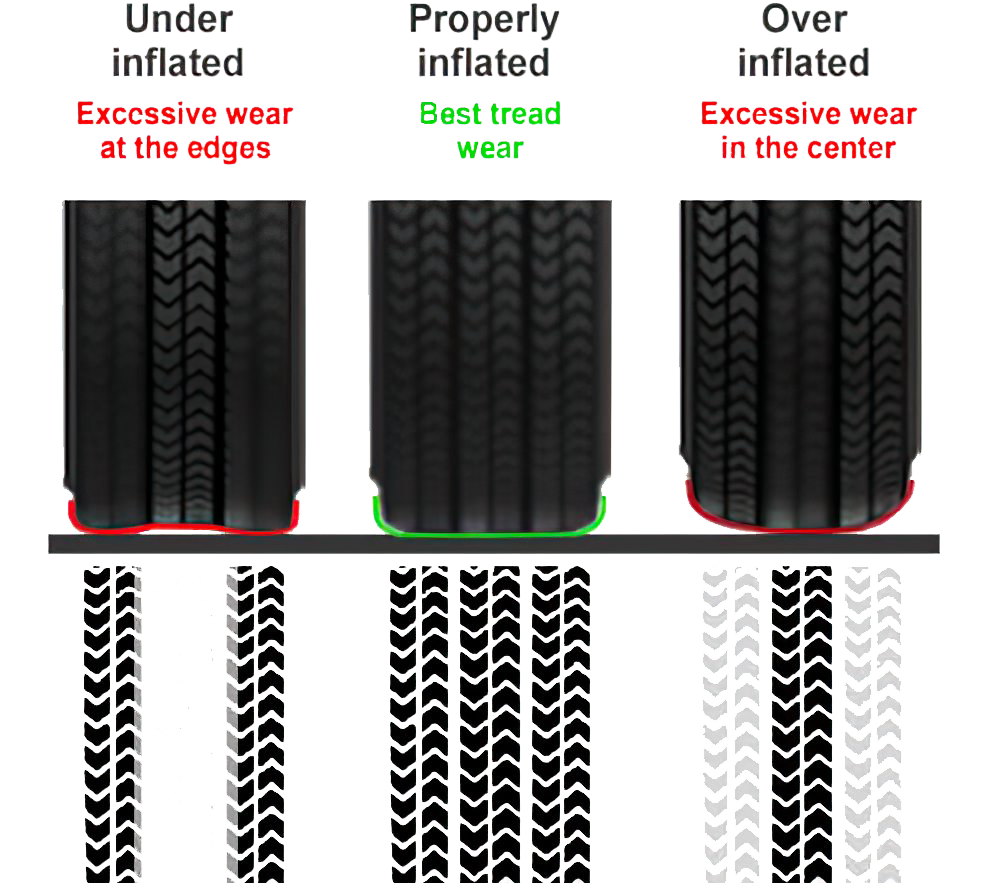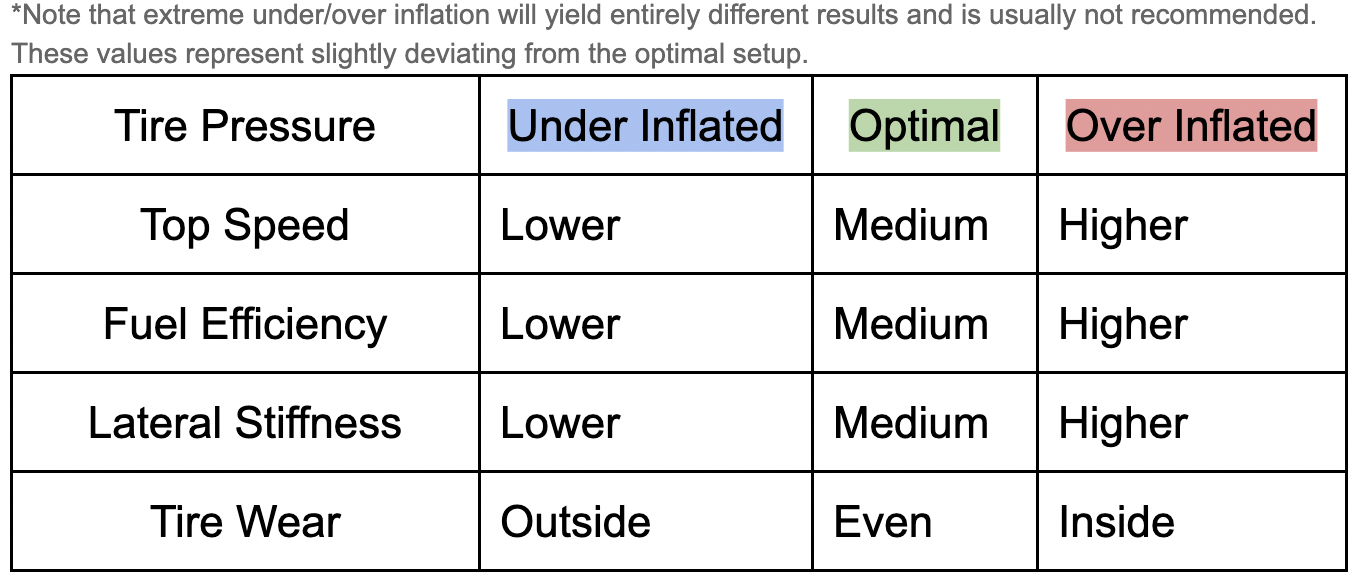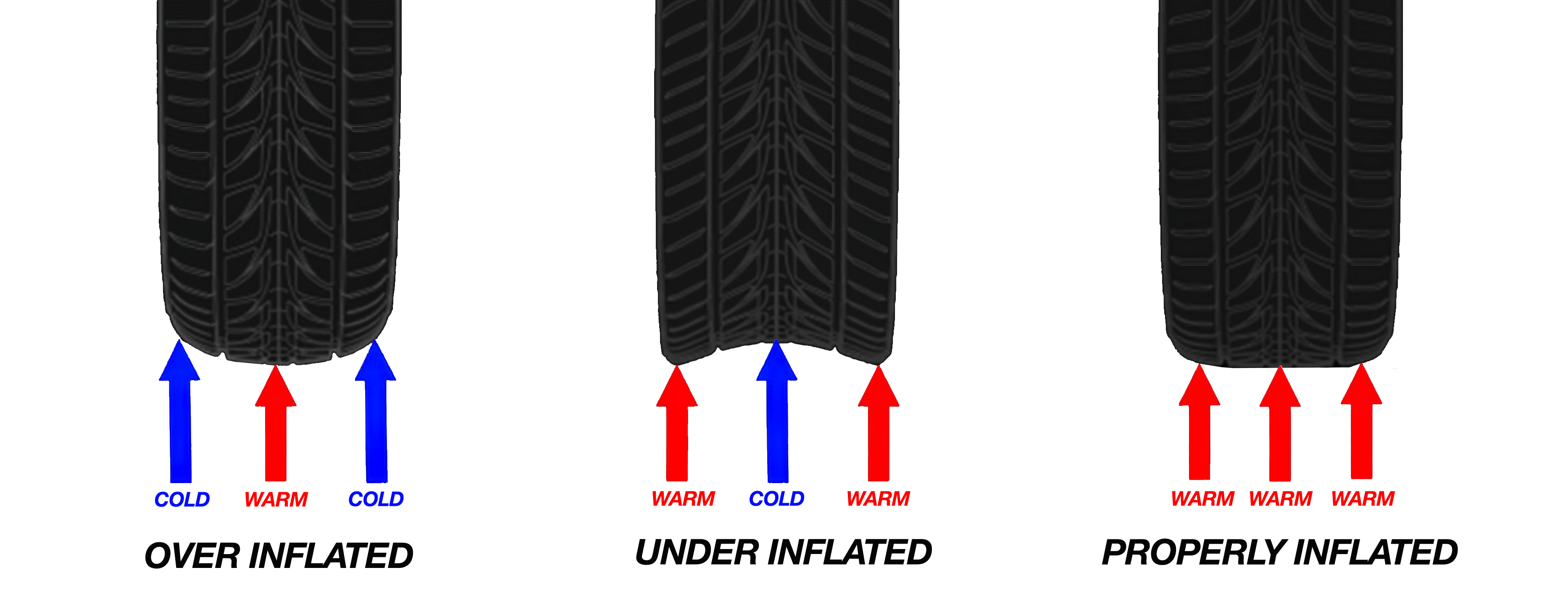Mazdaspeed Guide - Under Pressure
Everything you need to know to properly inflate your tires
Introduction
What's the point of this guide?
Have you ever worn a pair of shoes that were too small for your feet? How about too big? They probably weren't all too comfortable. Have you ever tried running while wearing one of these pairs? How about sprinting? Imagine weighting 3,200 lbs and sprinting at 65 MPH in shoes that don't fit your feet. Sounds terrible, right? That's what improperly inflated tires are doing to your car.
This guide intends to educate and inform owners about the importance of tire inflation, how it can be used to avoid certain problems and how one can expect different behaviors based on their setup.
A note on tires
This guide is not intended for any specific setups and does not cover conditions outside of general purpose driving and paved track use. Your mileage may vary depending on your car's setup and conditions.
Prologue
Adjusting your tire pressure is the easiest and most straightforward adjustment you can make on a car’s setup. Regardless of if your car stock or tuned, making sure your tires are properly inflated is a matter of safety first and any performance gains as a result is purely supplementary.
The Goal: To adequately inflate all four tires to maintain an even load and maximize your contact patch to increase grip and fuel efficiency without sacrificing handling and tire life.
Disclaimer
I take no responsibility in any harm done as a result of you tinkering with your car or tires. Please adhere to
all applicable traffic and road laws of your region and always exercise on the side of caution when unsure about something.
You have been warned.
Tire Shapes

The image above shows how tire inflation affect where the rubber meets the road.
Your tire pressure should consider the load (maximum weight that will be burdened by each tire) and the compound (the specific material of the rubber.) Softer compound tires are ideal for grip, but also wear off faster compared to harder compounds.
Think of those adhesive rollers used to remove lint and pet hair from clothing. The stickier the adhesive, the more hair it catches and the faster the roll runs out, whereas the less sticky adhesive will last longer, but it will require more rotations to remove the same amount of hair.
Over-inflating tires causes rounding edges, thus losing contact with the outer areas.
Under-inflate tires causes sagging edges, thus losing contact with the center area.
Proper inflation ensures contact at the center with enough expansion at the edges.
Tire Effects

Let's explore how different inflation levels alter the behavior of the car.
When tires are under-inflated;
- Soft and mushy steering feedback
- Increased friction in the straights lowering top speed potential
- Increased friction requiring more energy hurts fuel economy
- Softer side walls folding and increasing wear on outside of tire with less overall grip
- Decreased stiffness affecting handling under load
When tires are over-inflated;
- Lack of steering feedback under cornering and more prone to slip
- Decreased friction in straights increasing top speed potential, but less grip under cornering
- Lower tire temperatures and/or can’t operate within ideal tire temperatures for given compound
- Stiffer sidewalls and increased wear in the middle of the tire caused by ‘ballooned’ shape
- Decreased load on tire edges and decreased contact patch resulting in less grip
Don’t fixate so much on what the ideal tire pressure is, as this number will be different based on other variables (such as track temperature, sprung weight, compound, downforce, etc.) Instead, focus on achieving the ideal tire shape.
A well inflated tire will maximize the amount of contact your tire makes with the road, it will handle greater loads and evenly distribute the weight; and it will result in a much more responsive car during turn-in. Higher pressure will handle greater loads better (think circuits with high-speed sections like Spa-Francorchamps), whereas lower pressures work best for circuits with less load on the tire.
Tire Temperatures

The shape of your tires dictate what parts of the rubber get hotter as you lap a circuit. Knowing this, we can analyze our tire temperature readings and see if we have the ideal shape. You’ll rarely ever run an even temperature across the tire, but we want to close the gap between them as much as possible.
If the middle is consistently hotter than the edges, then your tire is over-inflated.
If the edges are consistently hotter than the middle, then your tire is under-inflated.
Adjust your tire pressures based on the newly acquired data and repeat the process. Your new stint should yield different temperature readings. Keep adjusting until you find the right shape for each tire. If you’ve reached a point where you are getting temp readings as even as possible, then you have achieved the ideal tire shape and your tire pressures are optimal.
Here are some baseline temperatures based on the type of tire.
These are not exact numbers are purely listed as reference.
- Street Tires should operate within 60 and 75°C (140 to 165°F)
- Semi-Slicks should operate within 75 and 90°C (170 to 195°F)
- Racing-Slicks operate at their best within 90 to 105° (195-220°F)
Epilogue
In Conclusion
That covers the basics of properly inflating your tires.
While there are many more factors one could, and should, consider with their tire setup, I am not interested in covering them here. This guide is intended as a basic introduction to understanding the effects of tire pressure. If you would like to learn more, please feel free to contact me.
Why not cover different tire types, setups, etc?
These topics are intentionally omitted from this guide due to un-accountable variabilities. There are simply way too many factors involved in recommending such setups to warrant covering them in a guide such as this that only covers the basics.
I will be having a 'where the rubber meets the road' guide available sometime in the future to discuss such topics more in-depth.
Have questions or complaints?
Use the contact form to send me a message. You can also contact me via email using the address in the footer, but I can't promise that your message won't get lost.